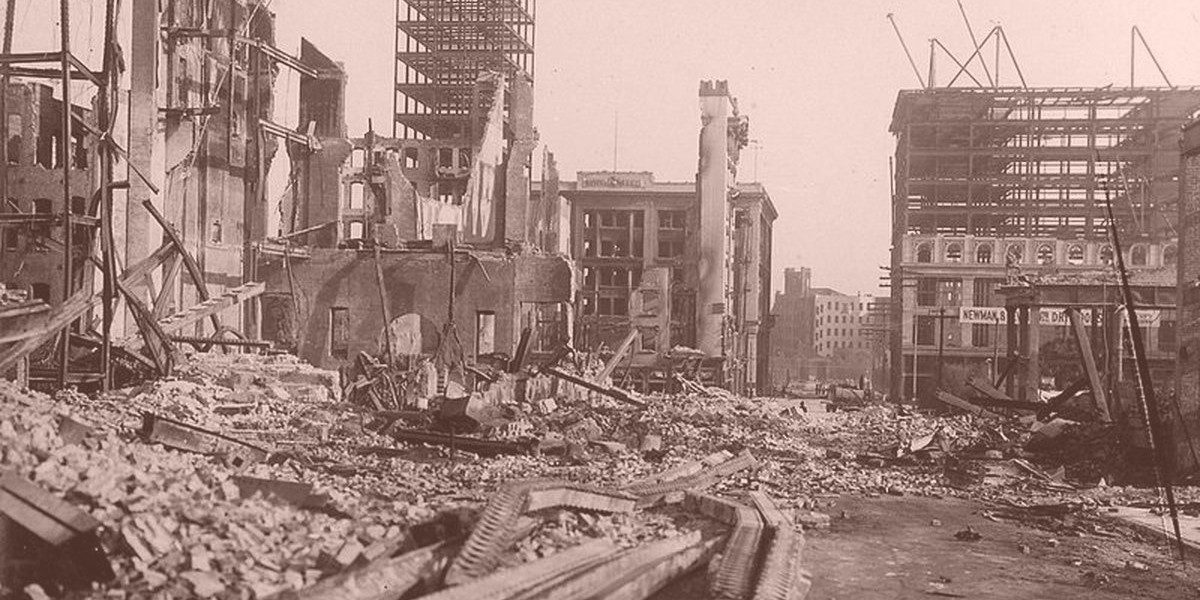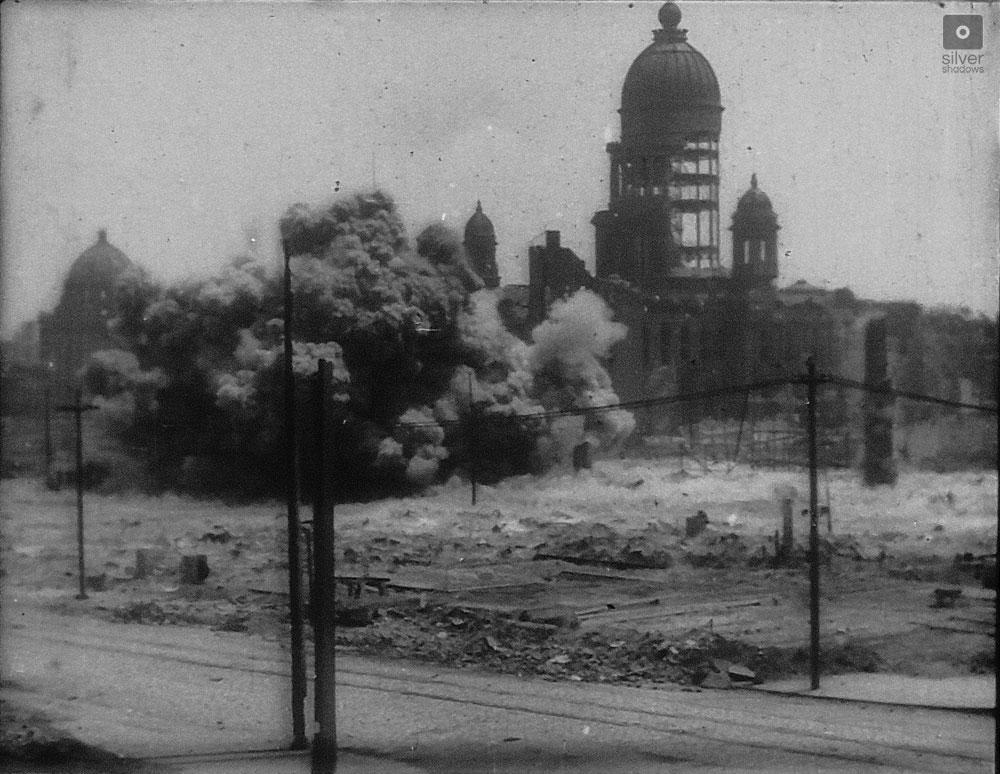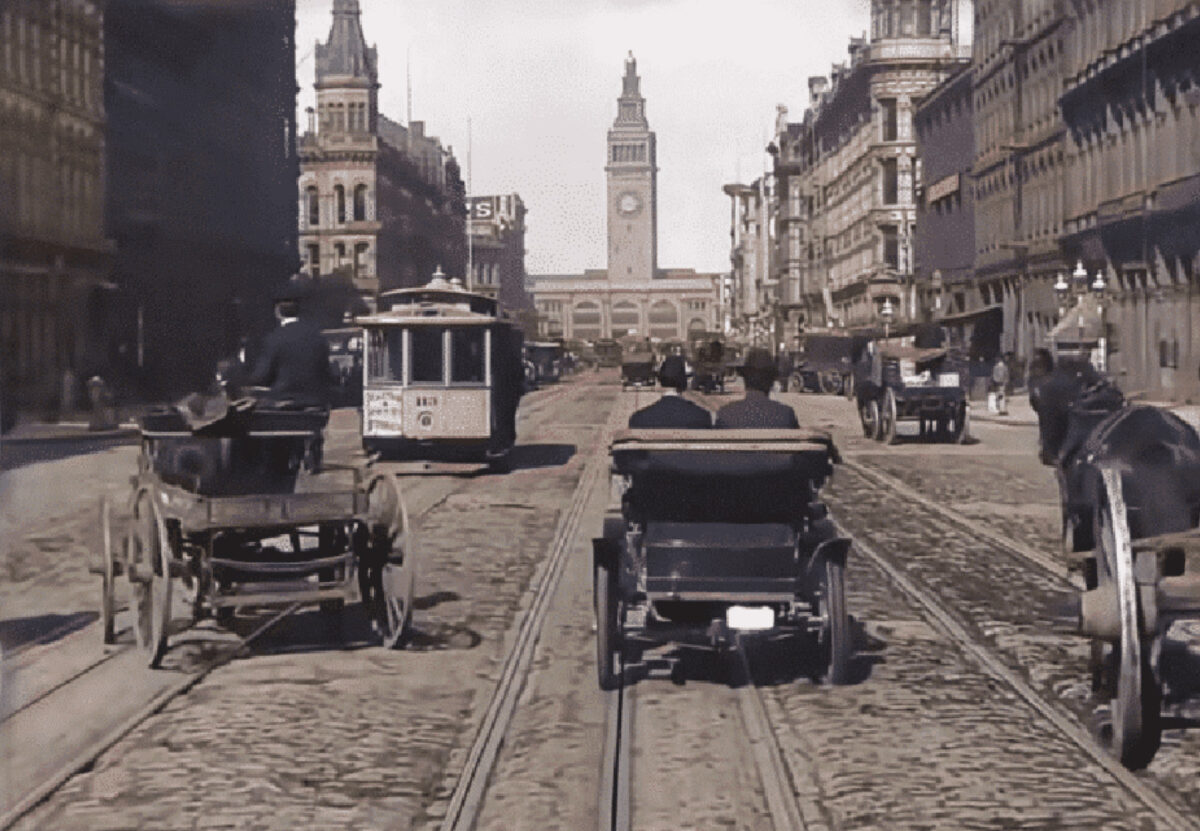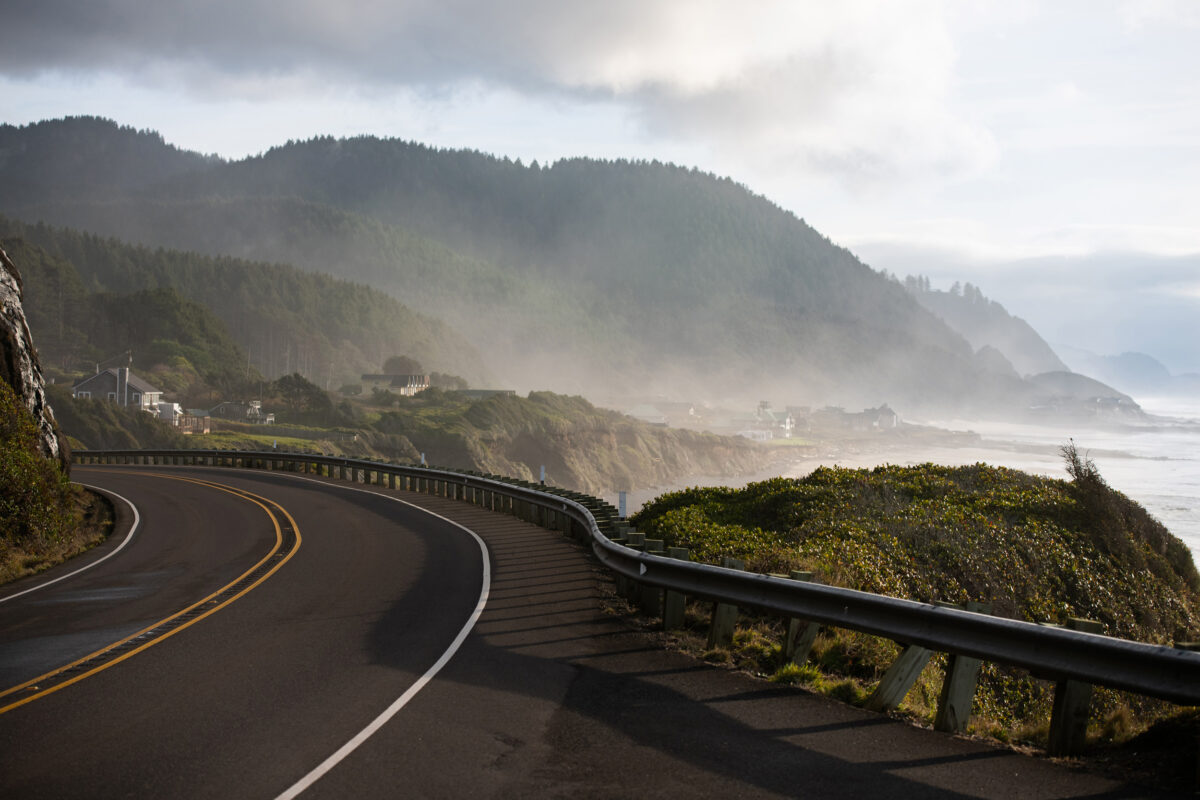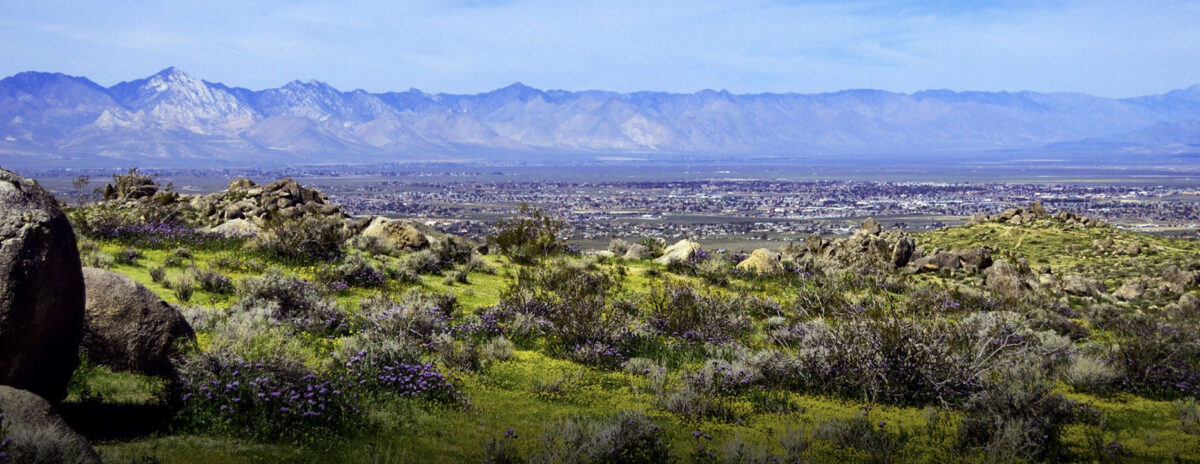The 1906 San Francisco earthquake shook the city on Wednesday, April 18th at 5:12 am. Almost 300 miles of fault ruptured, and people felt shaking throughout California and parts of Oregon and Nevada. Today, the anniversary of the earthquake, is a great day to remember the effects of the quake and reflect on how we can prepare.
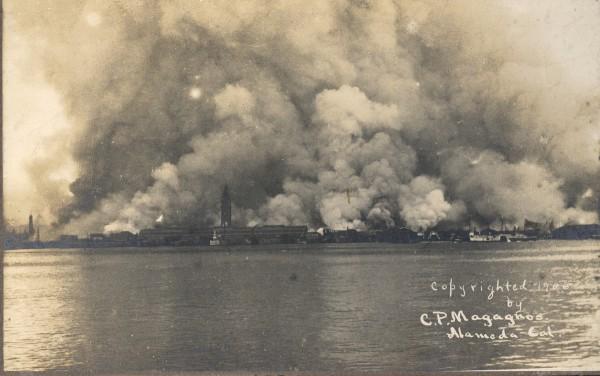
History is critical. The more we know about past earthquakes, the more we can prepare for future ones, because history repeats itself along fault lines. In this article, we’ll explore the recently found footage recorded some days after the 1906 earthquake. In the follow-up article, we’ll cover information from a 1908 report and the lessons learned from the earthquake.
New Video of the Earthquake
David Silver discovered the post-earthquake footage at an Alameda, California flea market in 2017. He posted the photo of the reel below to the facebook group, California History.
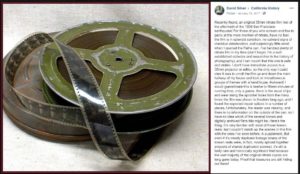
Jason Wright, a photography historian who grew up in the SF Bay Area, acquired the footage when he realized that the reel contained unseen images. With the help and funding from Jason’s partners, David Kiehn from the Niles Essanay Film Museum and The San Francisco Silent Film Festival, the new film was further identified and restored into 4k digital format.
The Miles brothers shot the video roughly 1 to 2 weeks after the earthquake. Amazingly, they took a similar video only four days before the earthquake.
Jason plans to share the newly found video online later this year. Right now, the best glimpse into the new images is in the PBS Newshour segment.
See below for the clips to compare between the two videos.
Four days Before the Earthquake on Market Street
1 to 2 weeks After the Earthquake on Market Street
New Images from the 1906 Earthquake
Below are newly-released images from the 1906 San Francisco Earthquake. This map shows the location of each photo along Market Street.
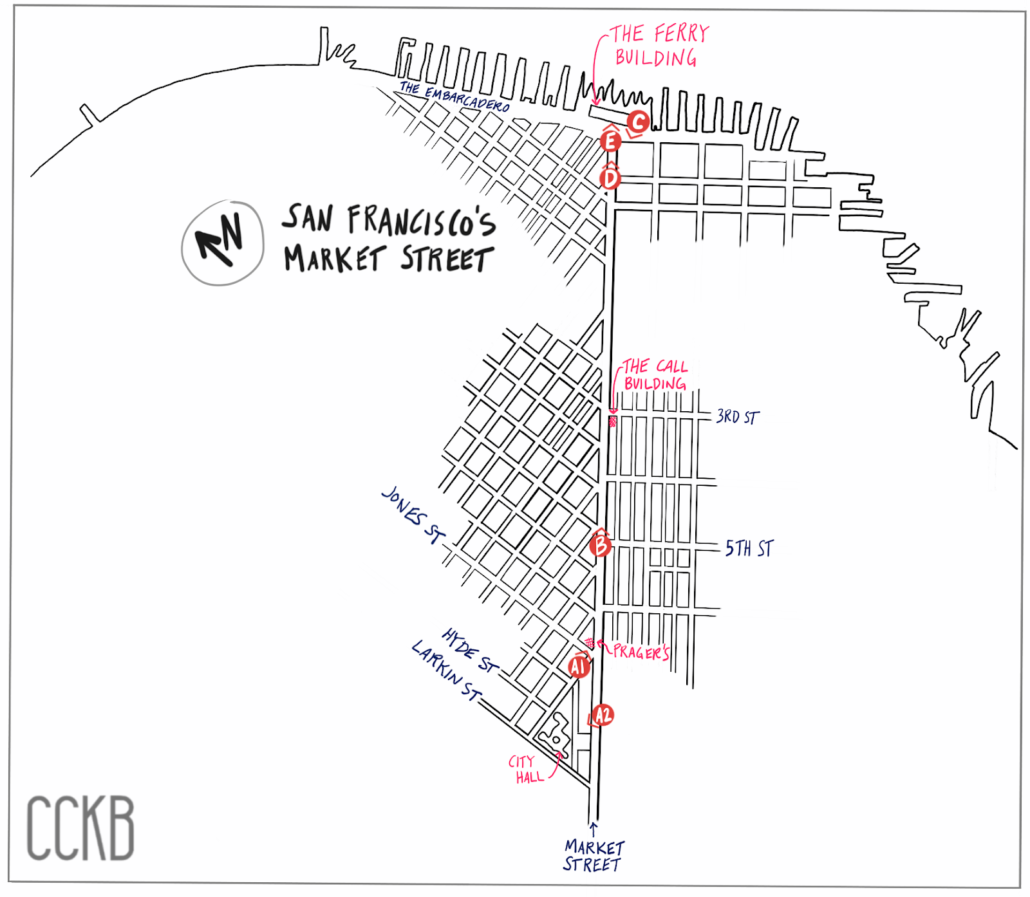
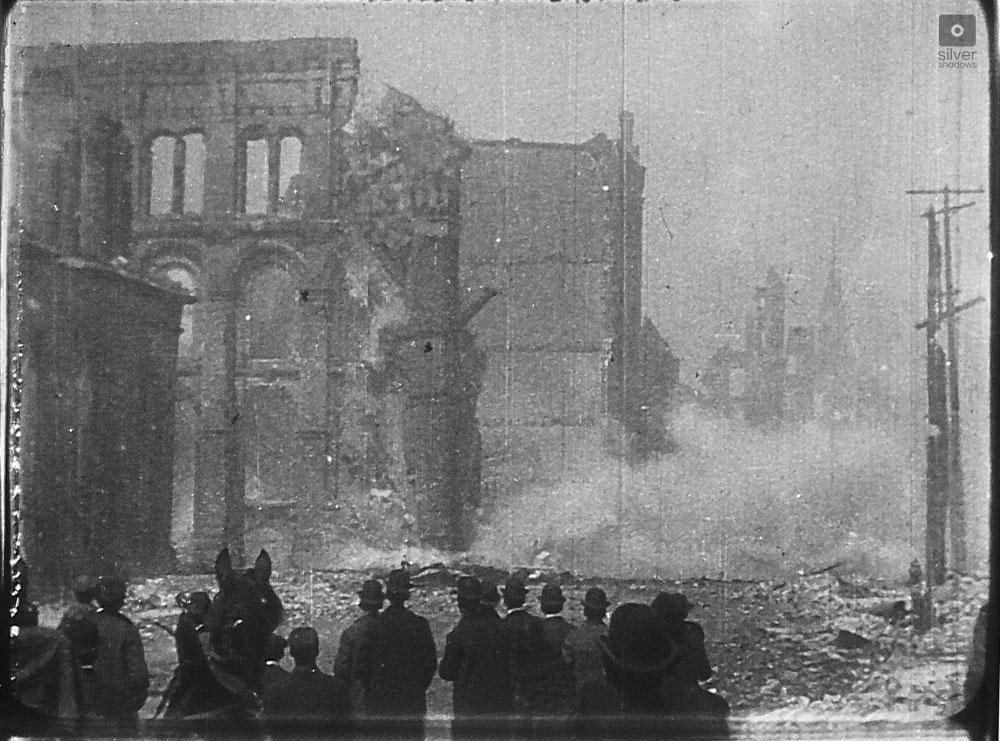 | [A1&2] — Firefighters resorted to dynamiting buildings to control the fires shortly after the earthquake since no water was available. A few days later, as seen in A1 and A2 photographs, the military also dynamited unsafe structures. |
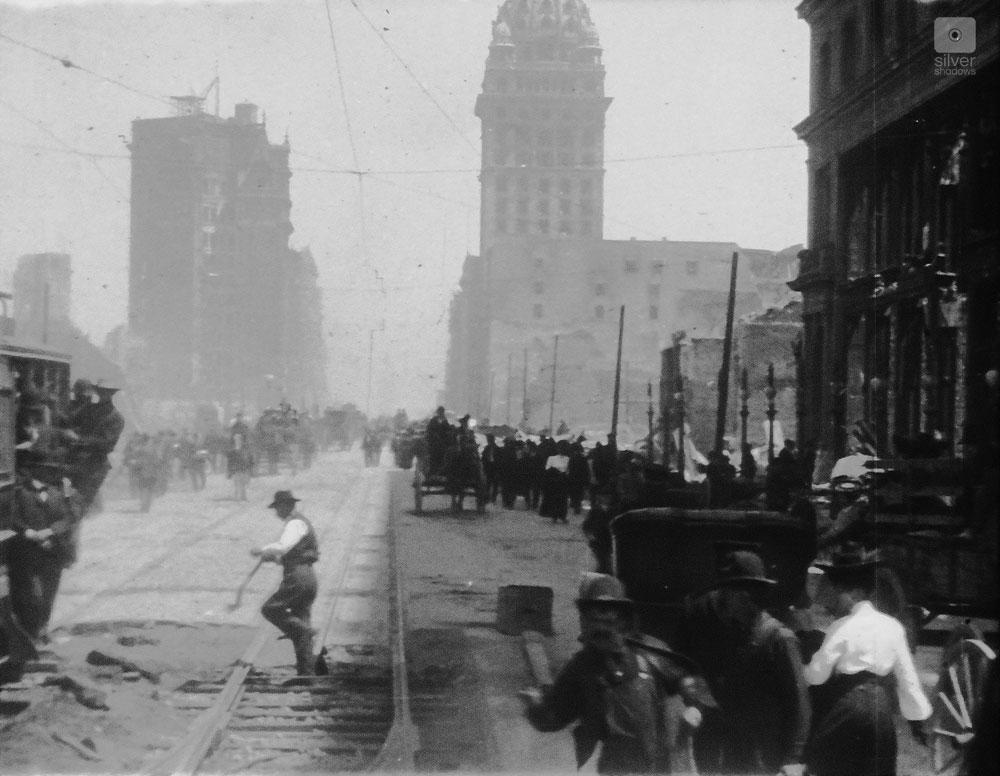 | [B]—The Emporium department store is the dark building directly to the right; the tall Call Building is further down on the right at Market and 3rd, and the Hearst Building is opposite the Call Building. On the day of the earthquake, the Hearst Building started burning at noon, and the Call Building followed at 2 pm. One to two weeks later, the after-effects of the fire had not cleared. Normally, from this view, the San Francisco Ferry Building would have been in view. |
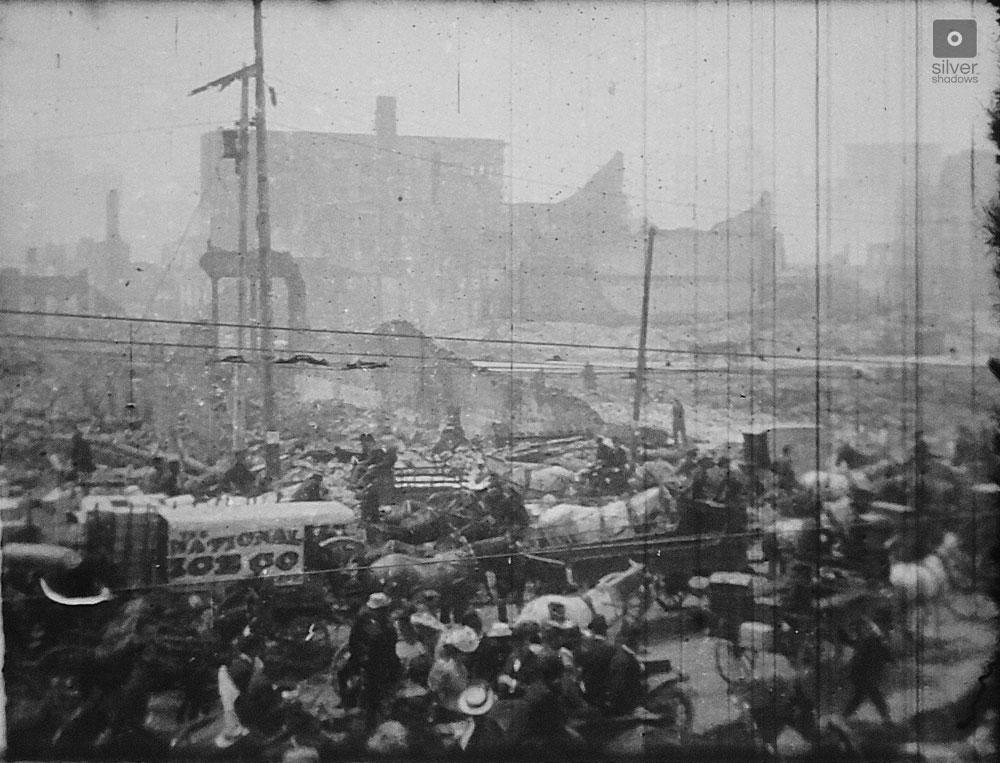 | [D]—The clock tower stopped for the first time during the 1906 quake, but in the post-earthquake footage, the clock was already working again. The scaffolding and bracing at the base of the tower was added to strengthen the 3rd to 7th floors of the tower, which had the most damage. Engineers designed the tower for a wind (horizontal) load of 30 pounds per square foot, a typical maximum design load for the time. The buckled structural members showed that the earthquake shaking was much greater than the standard design loads. |
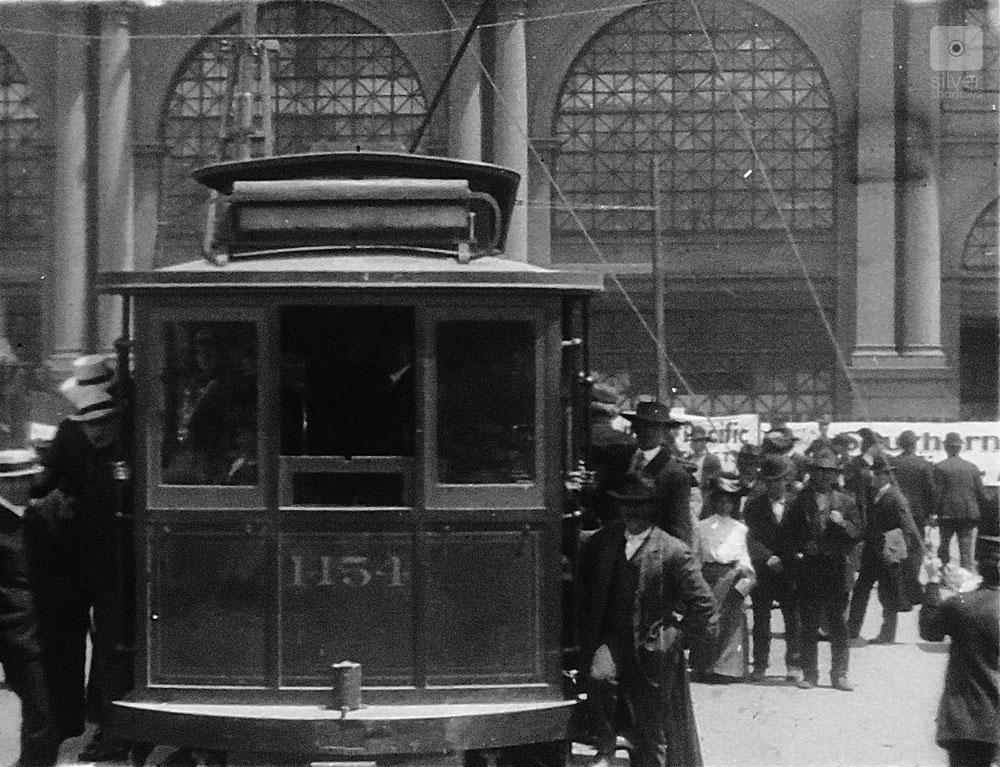 | [E]—The earthquake damaged the city’s cable cars and warped the cable car track. Immediate construction began on new streetcar lines, and within two weeks of the quake, the mayor of SF inaugurated the first streetcar line on Market Street. Soon after, the city replaced the majority of the cable cars with streetcars. |
The images and video help us to grasp what life is like after a big earthquake: smoky, shell-shocked people evacuating, fires, tent cities, and a complete halt to everyday activities.
See more images from life after the 1906 earthquake at The Atlantic.
Check back for the follow-up article on the 1906 San Francisco earthquake. We’ll delve into the details of the earthquake, the full extent of damage, and how San Franciscans made a quick come-back.
**Thank you to Jason Wright for providing the images seen in this article. Visit his website, Silver Shadows, later this year for the online footage release.
